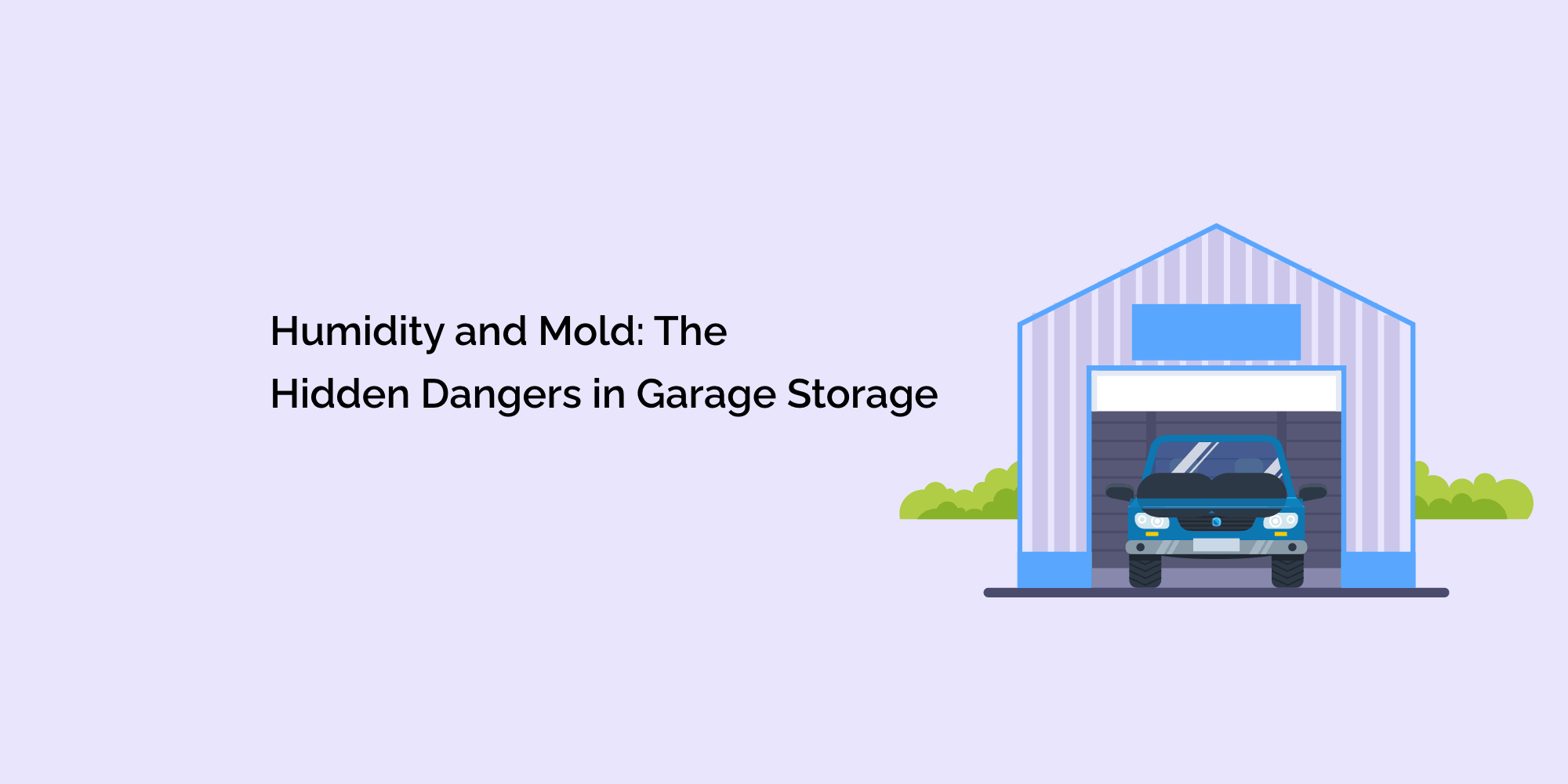Garages are versatile spaces, serving as storage areas for vehicles, tools, equipment, and household items. However, they are also susceptible to humidity-related issues that can lead to mold growth.
Mold thrives in damp, dark environments, and the garage's unique conditions make it a prime breeding ground.
In this comprehensive guide, we'll delve into the hidden dangers of humidity and mold in garage storage and provide practical tips to protect your belongings.
The Threat of Humidity and Mold
-
Mold Growth: Mold spores are ever-present in the air, but they require specific conditions to grow and multiply. Humidity, darkness, and organic materials (such as cardboard boxes, wood, and fabrics) provide the perfect breeding ground for mold.
-
Property Damage: Mold can damage your belongings, including clothing, furniture, documents, and electronics. It can also corrode metal items, leading to structural issues over time.
-
Health Risks: Exposure to mold spores can lead to a range of health problems, including allergies, respiratory issues, and skin irritation. Mold in the garage can infiltrate your home and affect indoor air quality.
-
Financial Costs: Mold remediation can be expensive, requiring professional services to remove the infestation and repair any damage. The financial burden can be substantial.
Now, let's explore practical steps to protect your garage storage from the dangers of humidity and mold.
Tips to Prevent Humidity and Mold in Garage Storage
1. Proper Ventilation:
-
Install Exhaust Fans: Adequate ventilation is key to reducing humidity in your garage. Install exhaust fans or vents to promote airflow and moisture removal.
-
Natural Ventilation: When the weather allows, open windows and doors to let fresh air circulate through your garage.
2. Control Humidity:
-
Use a Dehumidifier: Invest in a dehumidifier to maintain optimal humidity levels in your garage, typically below 50%. Empty the water reservoir regularly.
-
Hygrometer Monitoring: Use a hygrometer to measure humidity levels and make adjustments to your dehumidifier settings as needed.
3. Insulation and Sealing:
-
Proper Insulation: Insulate walls and ceilings with fiberglass or foam board insulation to stabilize temperatures and minimize condensation.
-
Seal Gaps and Cracks: Seal any gaps and cracks in walls, windows, and doors with caulk, sealant, or weatherstripping to prevent moisture infiltration.
4. Mold-Resistant Materials:
- Choose Mold-Resistant Products: When finishing or renovating your garage, opt for mold-resistant drywall, paint, and flooring materials to reduce the risk of mold growth.
5. Organize and Declutter:
-
Elevate Storage: Store items on shelves or racks, keeping them off the floor and away from walls to allow air circulation.
-
Regular Cleaning: Perform regular cleaning to remove dust and debris, which can create hiding spots for mold spores.
6. Airtight Containers:
- Use Airtight Containers: Store belongings in airtight plastic containers to prevent moisture from affecting items like clothing, documents, and keepsakes.
7. Periodic Inspections:
- Stay Vigilant: Conduct regular inspections to check for signs of moisture, leaks, or condensation. Address any issues promptly to prevent mold growth.
Conclusion
Humidity and mold are hidden dangers that can affect the items you store in your garage. By taking proactive steps to control humidity levels, improve ventilation, and use mold-resistant materials, you can protect your belongings from damage and create a healthier environment.
Regular maintenance and vigilance are key to ensuring your garage storage remains free from the harmful effects of humidity and mold, preserving your possessions for years to come.








